One of the things we most pride ourselves on at Amish Tables is the fact that every single table is a customized, hand-made table, created to suit every individual customer’s needs. We love the fact that each client has chosen the perfect size, shape, wood, color, stain and finish to suit their personal tastes and requirements.
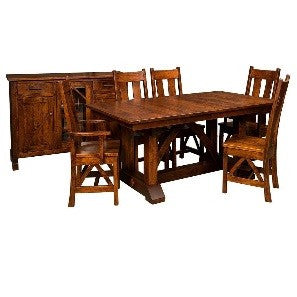
Bostonian Trestle Extension Table
Naturally, that leads to us answering a lot of questions about how to choose the right custom size dining table. We get questions about everything from choosing the right shape, size and design, to how many extensions to order. Here are some of the most popular questions we get asked, and their answers.
How do I choose the base size?
The two most important factors to consider when deciding on a table’s base size are how many people you will need to seat daily, and how much space you have available. On average, each person needs around 24 inches of space at a table. Take a look at our handy guide for choosing the perfect table size here. From this point, you can look at the styles you prefer and just how big you want to be able to get with extensions.
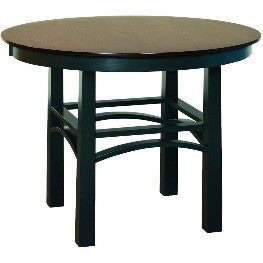
Artesa Single Pedestal Pub Table
How do I choose a style?
When you’ve worked out what size your basic table needs to be, it’s time to look at styles, and see whether the styles you like come in those sizes. For example, our round tables come in a variety of base sizes of between 36 and 72 inches. However, not all the round tables come in all sizes, so it helps to choose a few styles you like and start narrowing down the search from there. It’s the same with square or rectangular tables.
Should I choose a solid top or an extension table?
Most of our tables give you the option of choosing either a solid table top, or an extendable top that accommodates extensions. If you tend to have regular parties with plenty of guests, but an oversized dining table for regular use is just a space-thief, then go for an extension table. If you rarely host dinner parties, Thanksgiving dinners with the whole family, or other festivities, then a solid table top will do the job nicely.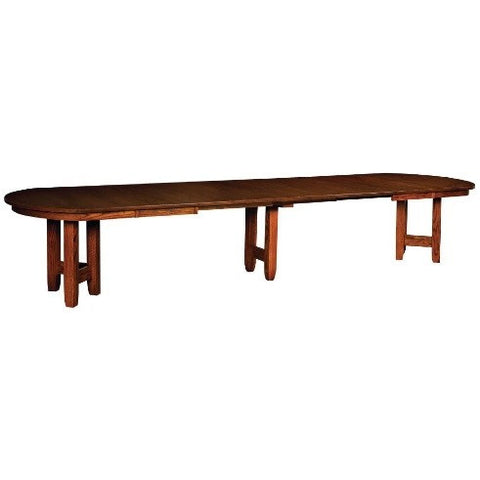
Westbrook Banquet Pedestal Extension Table
What’s the difference between an extension table, drop-leaf table and butterfly-leaf table?
An extension table has a segmented table top – and often segmented pedestals too – that splits in two and allows you to add sections of table top. This allows for a temporary increase in table size as and when needed. Depending on the style you choose, you can get up to 12 extensions with this kind of table, allowing for several extra guests. Depending on your requirements, the extra segments can be stored inside the table itself, or separately in a closet.
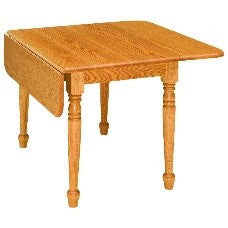
A drop-leaf table also has a segmented top, but one of the segments is hinged and can de dropped down to reduce the size of the table top, thereby saving space. The drop-leaf, or the segment that hinges down, is permanently attached to the table. These tables are usually suited for smaller homes or families, who may need to reduce their table size daily after use, or for people who don’t need a very large table, but would like to occasionally accommodate an extra two to three guests.
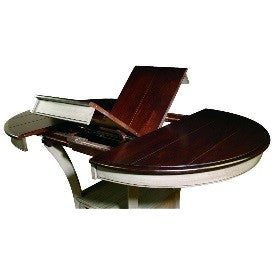
A butterfly-leaf table is structured similarly to a regular extension table, except that the extensions are hinged in the center, making them neat and compact, and either fold away into the table quickly and easily, or can be stored separately.
How many extensions should I choose?
Each extension is usually 12 inches wide, giving you a total of 24 inches of extra table space – in other words, room for one extra person (or two, if you don’t mind getting closer!). While you could be tempted to choose the maximum number of extensions in anticipation of massive family gatherings or dinner parties, be realistic with how many you will need. If you frequently have eight or ten extra guests, then by all means, set your table up to host fourteen people, but if you realistically only ever have two to four guests over, get two to four extensions.

